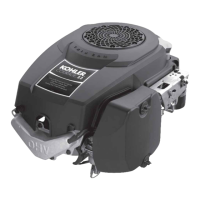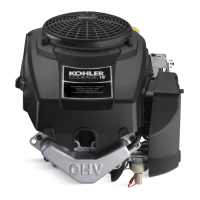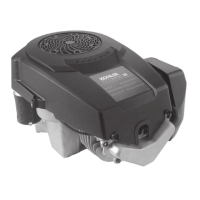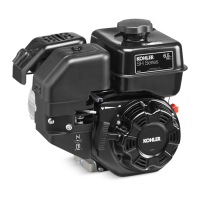9.8
Section 9
Inspection and Reconditioning
Ring failure is usually indicated by excessive oil
consumption and blue exhaust smoke. When rings
fail, oil is allowed to enter the combustion chamber
where it is burned along with the fuel. High oil
consumption can also occur when the piston ring
end gap is incorrect because the ring cannot properly
conform to the cylinder wall under this condition. Oil
control is also lost when ring gaps are not staggered
during installation.
When cylinder temperatures get too high, lacquer and
varnish collect on pistons causing rings to stick, which
results in rapid wear. A worn ring usually takes on a
shiny or bright appearance.
Scratches on rings and pistons are caused by abrasive
material such as carbon, dirt, or pieces of hard metal.
Detonation damage occurs when a portion of the fuel
charge ignites spontaneously from heat and pressure
shortly aer ignition. This creates two flame fronts,
which meet and explode to create extreme hammering
pressures on a specific area of the piston. Detonation
generally occurs from using low octane fuels.
Pre-ignition or ignition of the fuel charge before the
timed spark can cause damage similar to detonation.
Pre-ignition damage is oen more severe than
detonation damage. Pre-ignition is caused by a hot
spot in the combustion chamber such as glowing
carbon deposits, blocked cooling fins, an improperly
seated valve, or wrong spark plug(s).
See Figure 9-7 for some common types of piston and
ring damage.
Overheated or Deteriorated Oil
Scored Piston and Rings
Abrasive Scratched RingsStuck, Broken Rings
Figure 9-7. Common Types of Piston Damage.
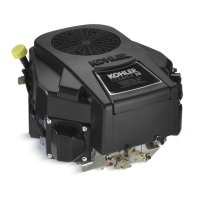
